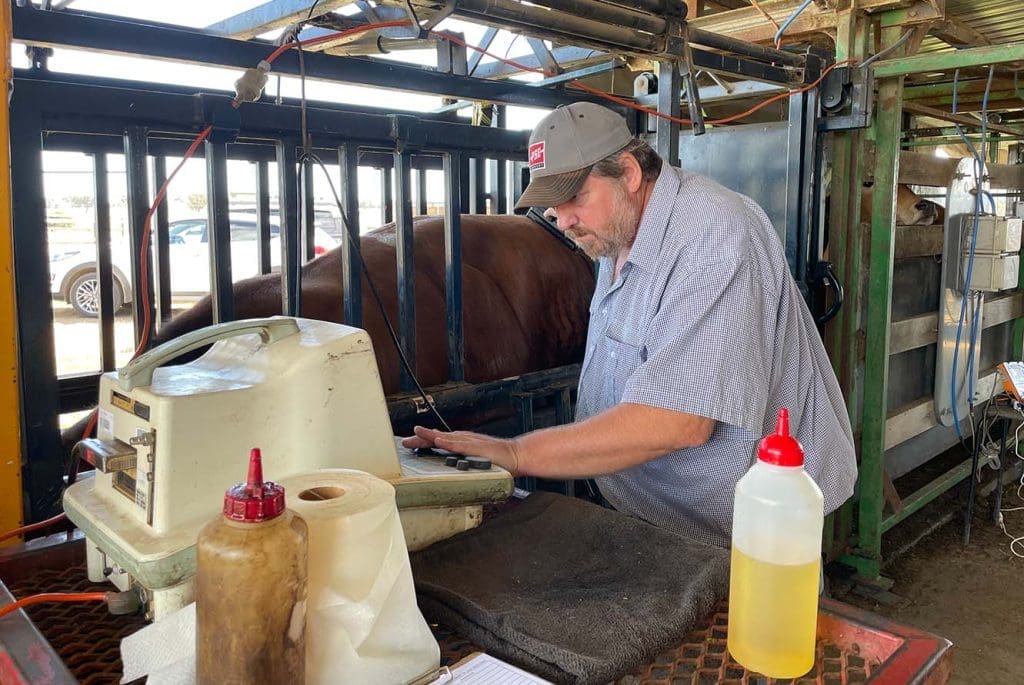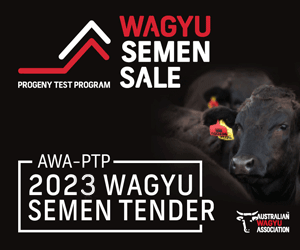
AGBU’s Dr Matt Wolcott is exploiting this opportunity to try to fill the crucial gap in understanding relationships around female condition and productivity, using the female reference population from the Southern Multi Breed project
BREEDPLAN genetic evaluation provides a pretty good description of animals before they enter the reproductive phase of their life.
However what the industry does not have at this stage is good information on how cows are able to maintain themselves once they enter that reproductive phase – especially once they start lactating.
The Southern Multi Breed project* provides a large reference population of females which are managed, from birth, under the same commercial conditions.
The Animal Genetics and Breeding Unit’s Dr Matt Wolcott is exploiting this opportunity to try to fill the crucial gap in understanding relationships around female condition and productivity.
Commercial beef breeders need to ensure cows are in adequate condition to meet the energy demands to maintain their own body reserves while partitioning resources to lactation, re-conception while continuing to put on weight and frame in early lactations.
Cow body condition is not well described in the current BreedPlan evaluation, and early research results suggest that the traits describing the genetics of carcase fatness, eye muscle area and marbling are not particularly good at describing those traits in females as they enter the reproductive phase of their lives.
“We need to understand how reproduction and lactation is impacting how cows are able to maintain body reserves,” Dr Wolcott said.
 “This is being investigated by collecting condition score data, along with weight, hip height and ultrasound measures of fatness and eye muscle area in wet females at their first re-breed,” he said.
“This is being investigated by collecting condition score data, along with weight, hip height and ultrasound measures of fatness and eye muscle area in wet females at their first re-breed,” he said.
By utilising the Southern Multi Breed reference cows, which are being intensively evaluated for reproductive traits including age at puberty and lactation anestrous, Dr Wolcott and his team are gathering data that could also provide a more complete understanding of the genetics of cow body condition and its association with reproductive performance.
The ultimate goal is to produce a BreedPlan EBV for lactating cow body composition, which can be applied by breeders to make better informed selection decisions around female productivity.
“The trait is also central to the breeding objective, as it directly impacts the need for supplementary feeding or reducing stocking rate when feed availability is limiting, which makes it very useful in the development of selection indexes,” Dr Wolcott said.
The current project includes Angus and Hereford seedstock breeders who have volunteered to have the recording done in their herds. This collected data, along with that collected in the Southern Multi Breed project females, will allow early results for temperate beef breeds to be made available more quickly than if we were relying on recording in research herds alone.
* About the Southern Multi Breed Project
The Southern Multi Breed (SMB) project is a collaborative R&D project involving NSW DPI and the University of New England, being conducted on five NSW DPI research stations, and UNE’s Tullimba research feedlot over five years between 2020 and 2025.
The $10 million project, co-funded by NSW DPI, UNE, Meat & Livestock Australia and the Commonwealth Government through the MLA Donor Company, will provide an invaluable source of information for seedstock and commercial cattle breeders.
Six breeds are involved: Angus, Hereford, Shorthorn, Wagyu, Charolais and Brahman.
The project provides the basis of an accurate reference population to a new age of multi-breed genetic evaluation, which will assist in the direct comparison of six major cattle breeds (and composites), allowing producers to make more informed decisions to improve their herd.
The goal of the project is to create a SMB dataset using BreedPlan traits, allowing for future breed comparisons irrespective of hide colour. Additionally, the work will create genomic values with higher accuracy than what is currently achieved.
The project will also build a reference for hard-to-measure traits such as those influencing female reproductive performance (discussed in this article), meat quality, carcase traits and feed efficiency, which will enable the development of a temperate multi breed genetic evaluation herd.
The Animal Genetics and Breeding Unit (AGBU) is a joint venture between the NSW DPI and UNE.
- The Southern Multi Breed project has a new website, providing more comprehensive information about the project’s purpose and structure, traits being recorded and progress reports. Click here to access
